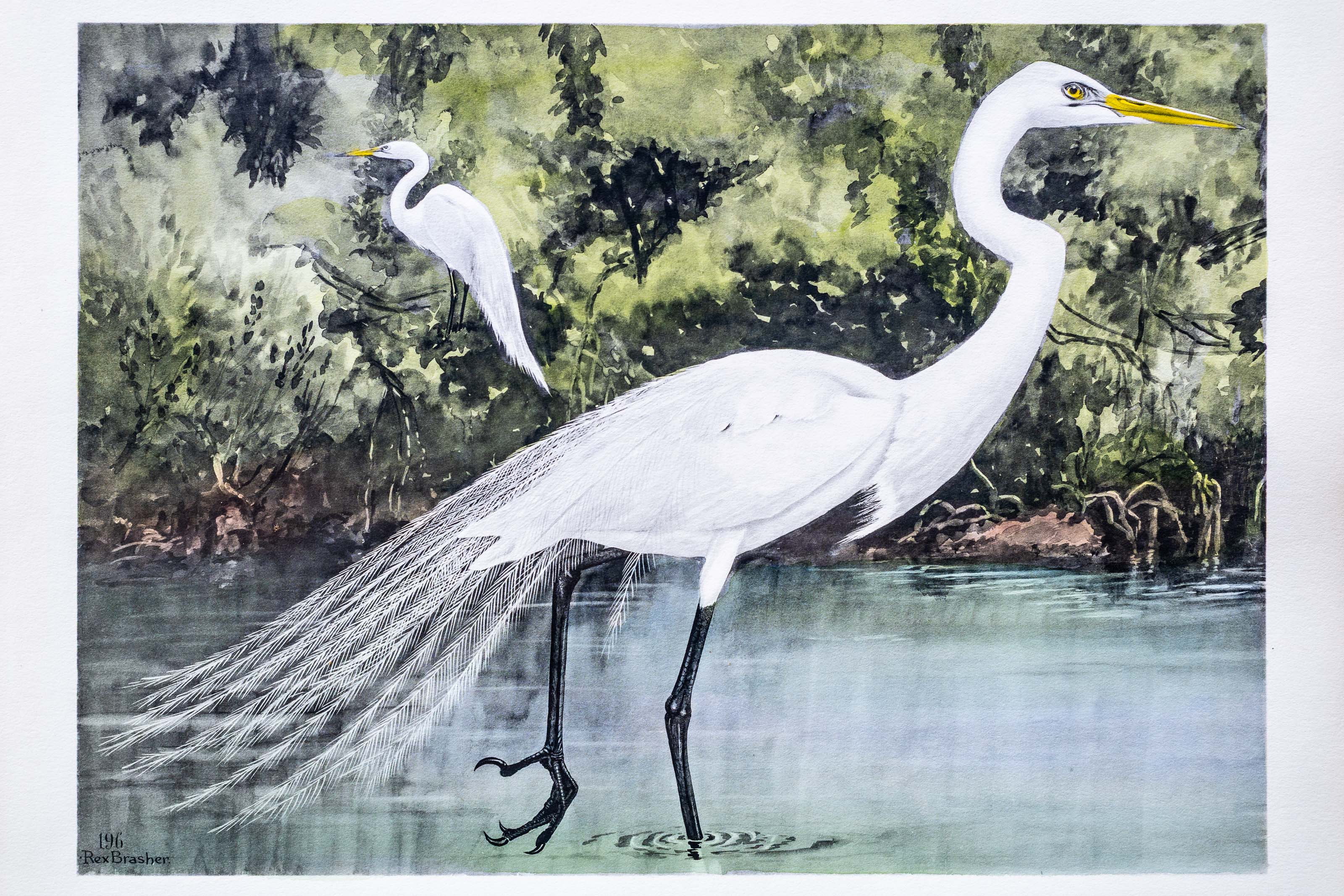
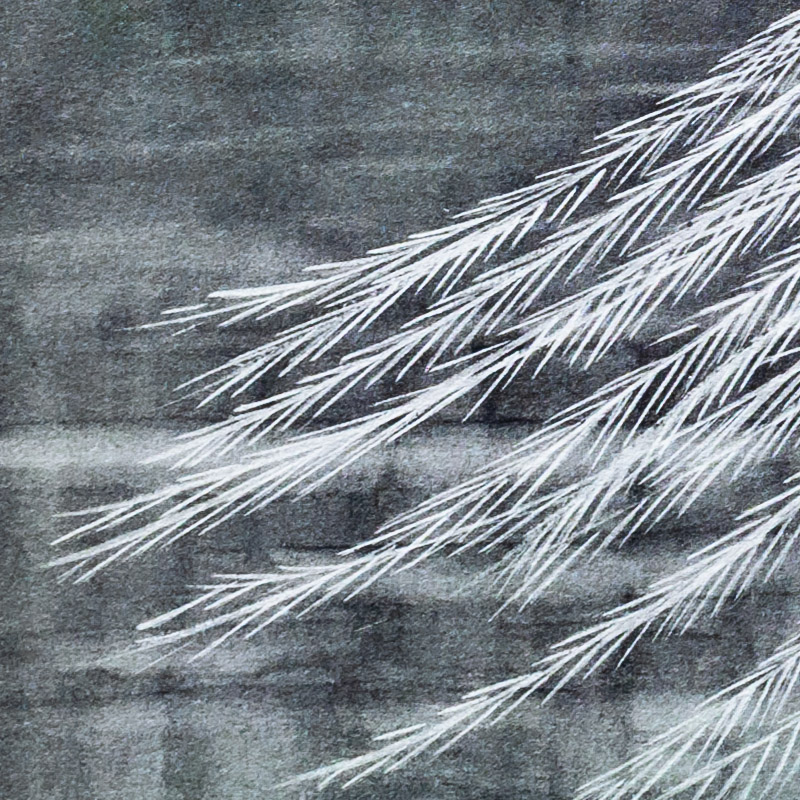
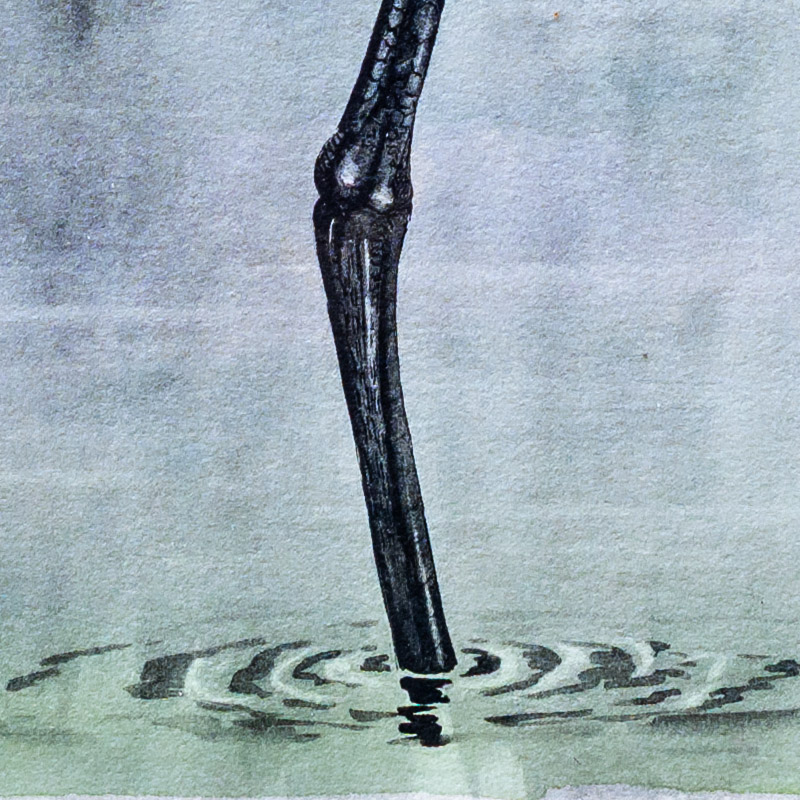
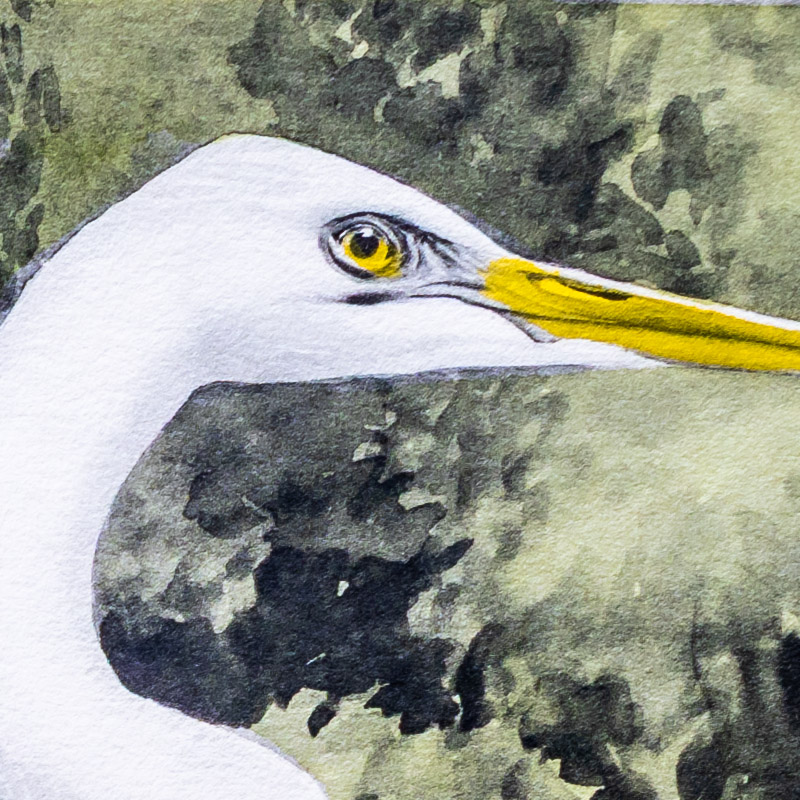
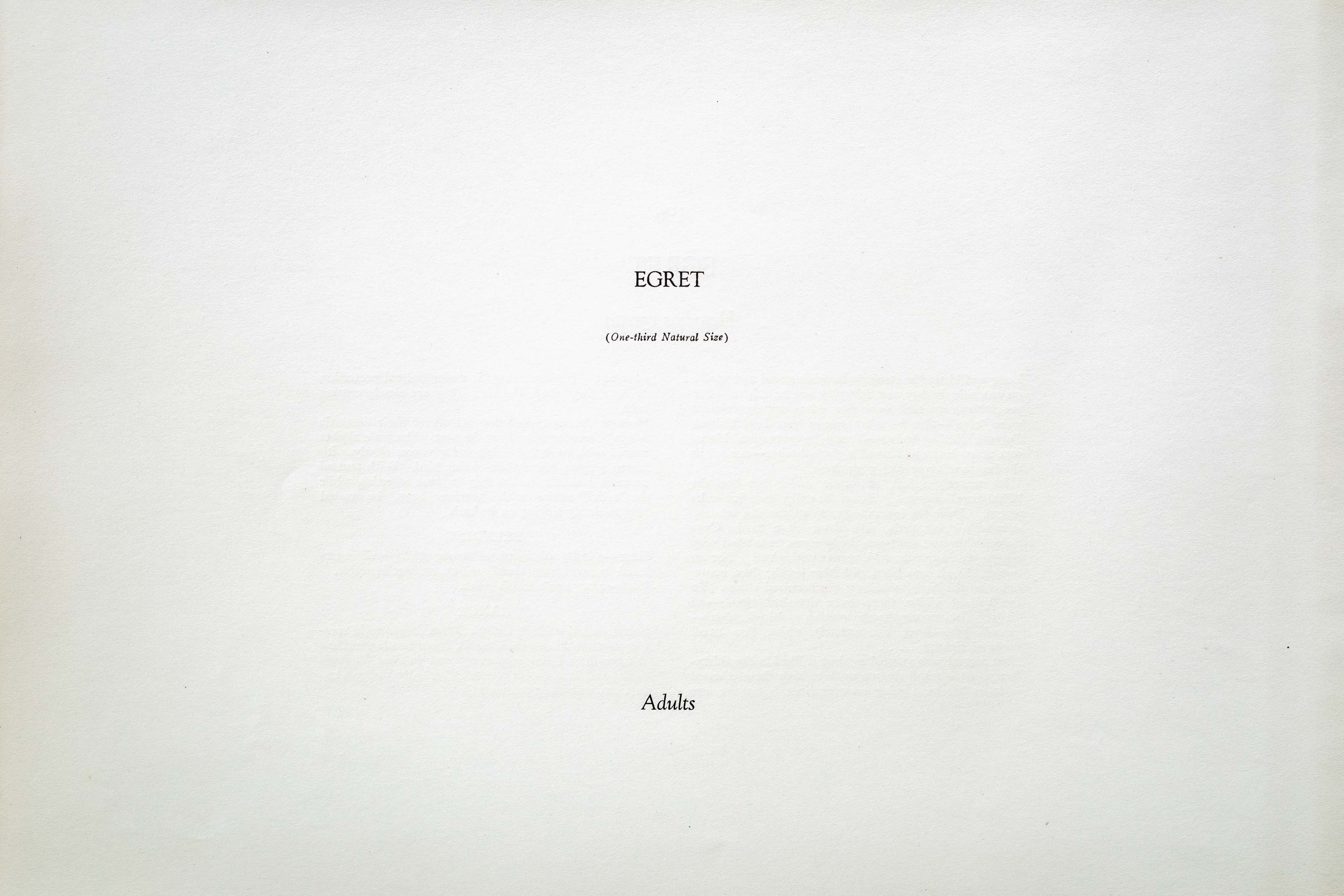
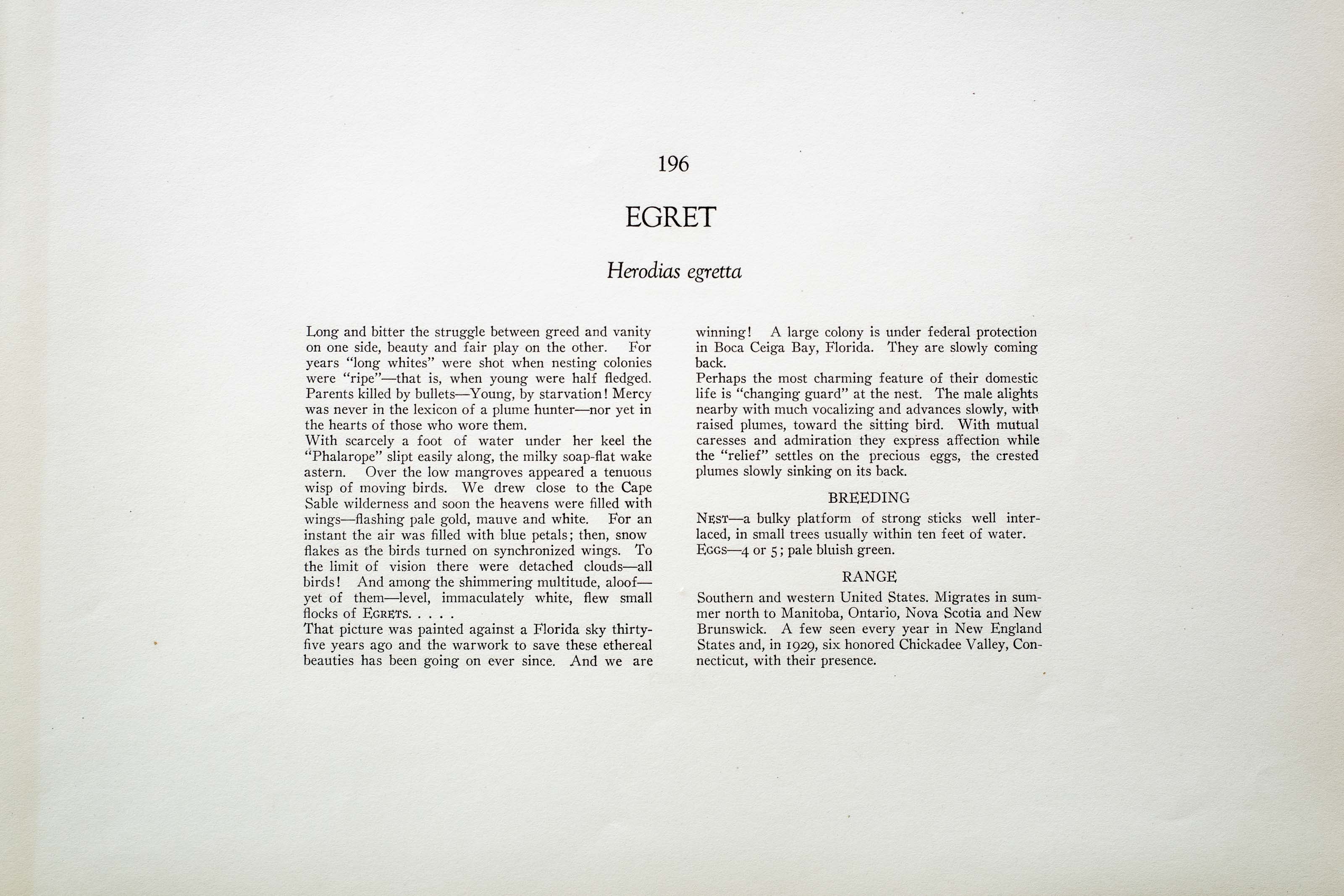

Unknown
1930
3
196
A team of dedicated board members, volunteers, and student interns has published every page in Volume 9. This volume includes 360 images of paintings and lyrical descriptions of birds, now available online for everyone to enjoy anywhere in the world. This is a monumental task. Each volume requires approximately 400 hours to photograph, edit, transcribe, catalog, and publish online. We need your support to complete this work.
If you're tech-savvy, have a good eye, are meticulous with details, and love structured data, please consider volunteering by emailing us at hello@rexbrasher.org.
We encourage all bird lovers and supporters to consider a monetary donation to support our mission to make Rex's work available for everyone. You can provide a one-time or recurring donation online.
Long and bitter the struggle between greed and vanity on one side, beauty and fair play on the other. For years "long whites" were shot when nesting colonies were "ripe" — that is, when young were half fledged. Parents killed by bullets — Young, by starvation! Mercy was never in the lexicon of a plume hunter — nor yet in the hearts of those who wore them.
With scarcely a foot of water under her keel the "Phalarope" slipt easily along, the milky soap-flat wake astern. Over the low mangroves appeared a tenuous wisp of moving birds. We drew close to the Cape Sable wilderness and soon the heavens were filled with wings — flashing pale gold, mauve and white. For an instant the air was filled with blue petals; then, snow flakes as the birds turned on synchronized wings. To the limit of vision there were detached clouds — all birds! And among the shimmering multitude, aloof — yet of them — level, immaculately white, flew small flocks of EGRETS. . . . .
That picture was painted against a Florida sky thirty-five years ago and the warwork to save these ethereal beauties has been going on ever since. And we are winning! A large colony is under federal protection in Boca Ceiga Bay, Florida. They are slowly coming back.
Perhaps the most charming feature of their domestic life is "changing guard" at the nest. The male alights nearby with much vocalizing and advances slowly, with raised plumes, toward the sitting bird. With mutual caresses and admiration they express affection while the "relief" settles on the precious eggs, the crested plumes slowly sinking on its back.
NEST — a bulky platform of strong sticks well interlaced, in small trees usually within ten feet of water.
EGGS — 4 or 5; pale bluish green.
Southern and western United States. Migrates in summer north to Manitoba, Ontario, Nova Scotia and New Brunswick. A few seen every year in New England States and, in 1929, six honored Chickadee Valley, Connecticut, with their presence.